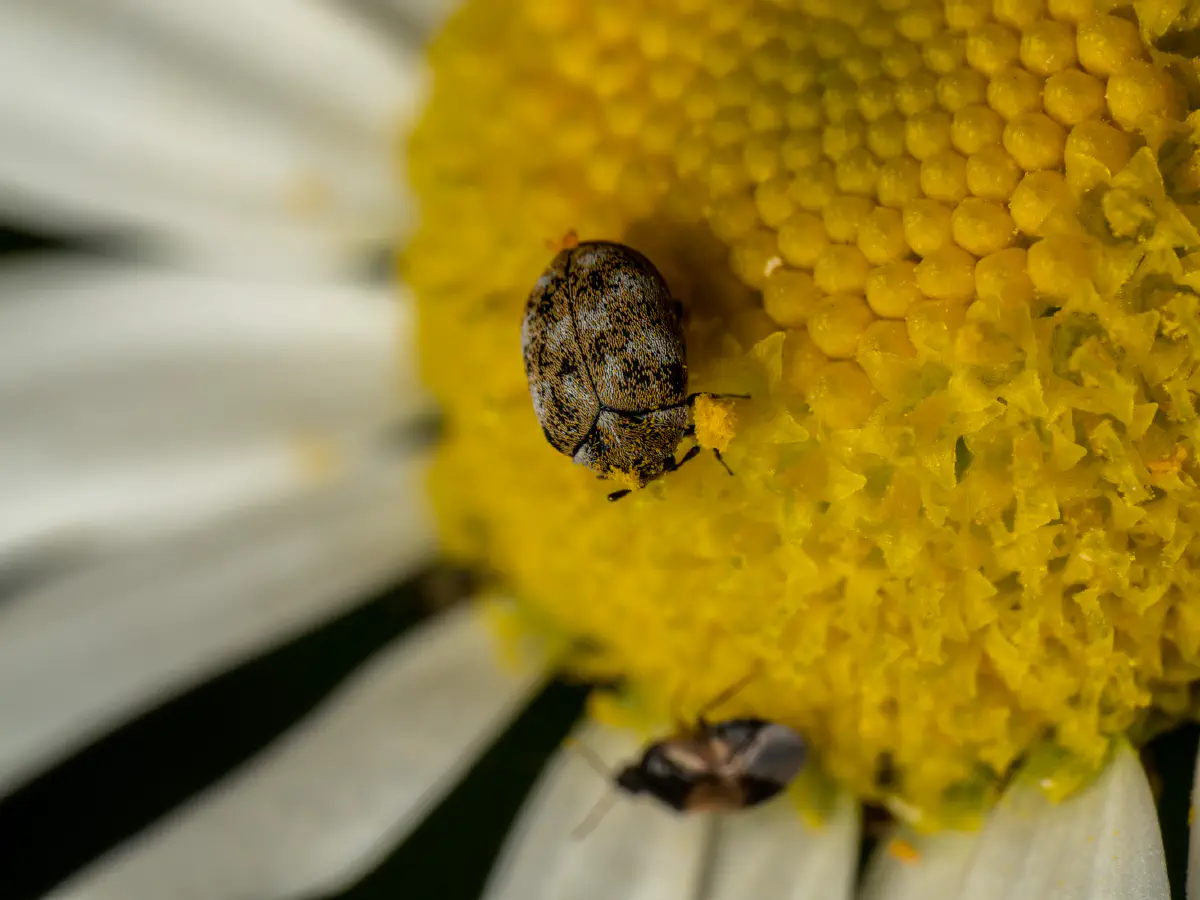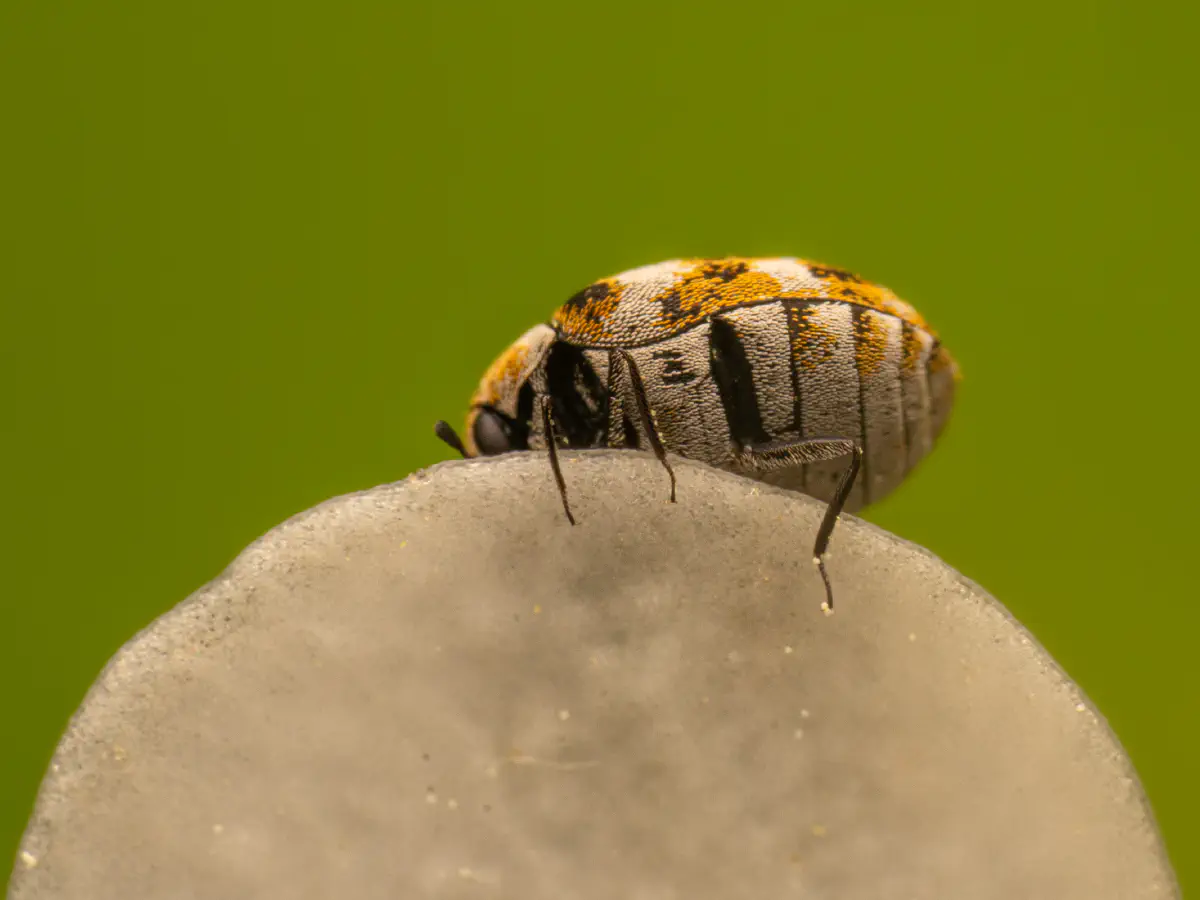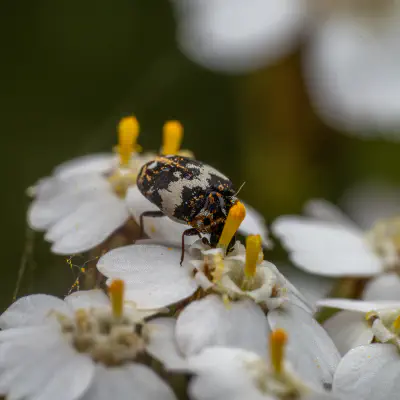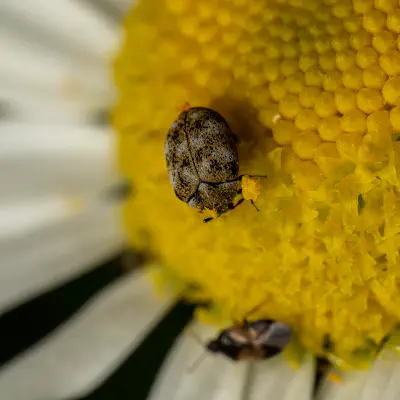The adult common carpet beetle varies from about 2.5 to 3.8 mm (0.10 to 0.15 in) in length. The antennae have eleven segments, three of which form a club, and the eyes are notched at the front. The head is black but is largely concealed under the prothorax, which is also black, liberally speckled with white scales apart from a band in the centre. The elytra (wing cases) are black with orange or reddish scales
near the midline and variable but symmetric patches of white scales elsewhere. As the beetle gets older, the scales tend to get rubbed off so the beetle changes in appearance. The small white eggs are laid in batches of 30 to 60 and have projections which help them to adhere to carpet fibres. The larvae are brown and moult five times before pupating; the final instar larva is hairy and larger than the adult beetle.
Pupation takes place in the last larval skin.






